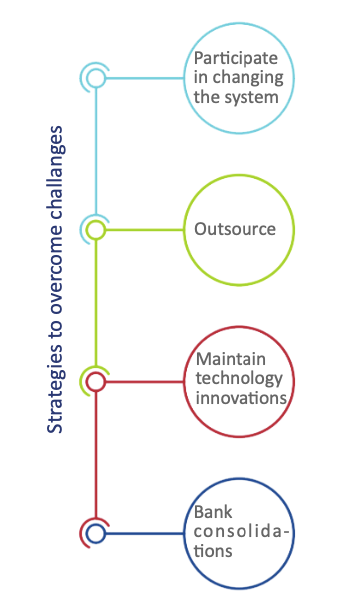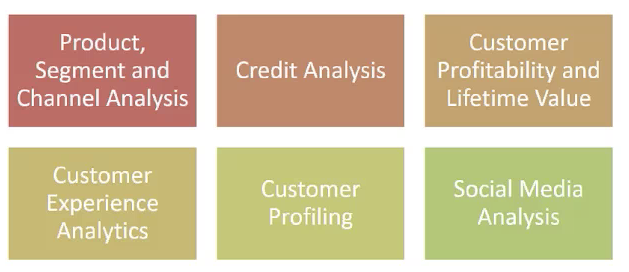The banking and financial services industry is challenged to stay profitable despite frequently changing economic, regulatory, and technological changes across the globe, using big data and analytics to understand consumer behavior, train predictive models, counter fraud, and find new business possibilities every day.
The Basics of Banking
Banking is the cornerstone of any economy’s financial well-being. Banks allow consumers and businesses to make secure financial transactions and investments, obtain lines of credit, and save and grow their money. In the 20 years, technology has advanced traditional banking from strictly brick and mortar branches, and into the hands of consumers through online banking and mobile apps. However, the basics of this ancient system remain intact: the need for standardization of procedures that govern loans, set interest rates, and guarantees behind currencies.
The banking industry, as it currently exists can be divided into two categories: commercial banking and investment banking. Commercial banking represents consumer and business banking including commercial banks, foreign banks, savings and loan associations, credit unions, thrifts, and other savings banks. Investment banking and brokerages include managing portfolios of financial assets, trading in securities, fixed income, commodity and currency, corporate advisory services for mergers and acquisitions, corporate finance, and debt and equity underwriting.
Banking Industry Trends
The banking industry is ever attempting to catch up with advancements in its consumers’ preferred way of doing business. Technology, fintechs, and non-banks are all challenging traditional banking institutions to keep up with consumer demand in new ways. However, given the risks involved with potential data breaches and loss of funds, the financial services sector has been slow to invest in this strategic change.
Ultimately though, consumer demand is forcing online banking, mobile phone applications, banking services from non-banking companies, cashless purchases, and increasing consumer debt levels. However, the fundamental challenge of the banking industry remains the same, how to provide services while making a profit. There are several strategies that banks can employ to deal with these challenges.
Analytics is the answer
When it comes down to it, each of the 4 strategies, encompass analytics at its core. Reason being that financial services cater to millions of customers and when you market to large segments, using analytics you can see tangible impacts and high ROI solutions that can be delivered. Breaking it down further, customer analytics for the financial industry, can be categorized into 6 broad categories:
It is said that it is more profitable to retain a customer than it is to acquire a new customer in the present day. Banks are constantly at risk of losing customers and to control this, they may offer their best customers better rates, waive annual fees, or prioritize treatments. However, such retention strategies have associated costs, and financial institutions cannot afford to make these offers to every customer. The success and practicality of these customer retention strategies are dependent on identifying the right action for the right customer. Using customer analytics in the above 6 broad categories, banks are able to better understand their customers and ultimately better serve the market and overcome their challenges.
Case Study: Global Financial Institution
A global financial institution’s client coverage group needed an efficient, automated system to use to view, onboard, and manage their clients and all related data. We developed an award-winning one-stop portal for the customers that enables managers to monitor key performance indicators, instead of relying on Excel-based reporting from multiple sources.
How We Helped:
We worked closely with our customer to understand the company’s core needs and to develop a relationship manager portal that improves the efficiency and effectiveness of thousands of commercial banking relationship managers and the management team.
The portal provides integrated functionality in three distinct areas:
- Social: blending all social channels information in one place, allowing RMs to discuss client opportunities and share ideas.
- Client Reporting: Featuring customized performance reporting and client-specific reporting on KPIs
- Tasks: RMs can submit, manage, and track service requests, allowing for better management of existing and new clients
Read more on our Client Reporting and Performance Management Portal for Bank Relationship Managers.
Recent Blogs

Ten Learnings from the 2024 Gartner Data & Analytics Summit
March 27, 2024

Beyond Copilot: Revolutionizing Retail with Autonomous Agents
February 29, 2024

Building a Data-Driven Organization: Why your Tech Solutions are Failing?
January 19, 2024

5 Data and AI Trends You Can’t Ignore in 2024
December 21, 2023




